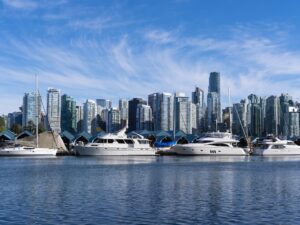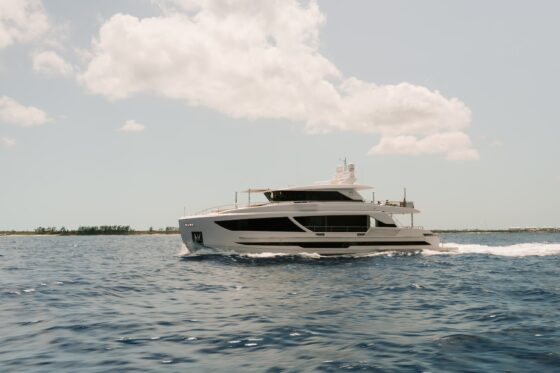
Canada to introduce new ‘luxury tax’ on yachts, cars and jets

Canada’s new Select Luxury Items Tax Act has received parliamentary approval and will go into force from 1 September 2022. The levy will add a 10 per cent tax on the full value of any Canadian purchases of boats that exceed CA$250,000 (US$172,96), and aircraft and cars that exceed CA$100,000 (US$77,770).
The Canadian government argues the new tax will not only help reduce inequality by distributing wealth, but will also discourage the country’s wealthiest from purchasing emissions-hungry vehicles, thereby protecting the environment.

The tax aims to reduce emissions created by luxury vehicles, including yachts, cars and jets
The impact of the pandemic has been very uneven in Canada, as in other countries, and this has been one deciding factor in implementing the new tax.
“Some Canadians have lost their jobs or small businesses [during covid], while some sectors of the economy have flourished,” reads a statement on the government’s website. “That’s why it is fair today to ask those Canadians who can afford to buy luxury goods to contribute a little bit more.”
There has, however, been backlash against the levy.
Earlier this year, Bill Yeargin, CEO of US-based boatbuilder Correct Craft, appeared on the Boat Boss podcast to discuss the tax while it was still a proposal.
Yeargin says that luxury taxes are appealing to politicians looking to redress rising wealth inequality, but that history shows they don’t work.
“There’s history with luxury taxes: a lot of times politicians see perceived inequities and they try and fix it by taxing the rich,” Yeargin says. “But there’s history with this. A number of countries have tried to do the same thing and every single time, it fails. In the United States, we tried it in the early 90s. Thousands of jobs were lost and it created a deficit for the federal government because of the sales that were lost. So, it was repealed pretty quickly.”
In 1991, the United States introduced a 10 per cent luxury tax on boats, which was designed to help solve the budget crisis. The tax was linked to a rapid decline in sales across the US boating industry, putting thousands out of work.
Yeargin goes on to say that other countries such as Spain, Turkey, New Zealand, Italy and Norway “have tried the same thing” and repealed the move within a year or two. “It would be nice if we could learn our lessons from the past,” he says. “The people that [luxury taxes] hurt are not the rich. They can afford the extra 10 per cent but it’s a principal thing, they don’t want to pay it, and the person who gets hurt is the person building the boat. They lose their jobs. Unfortunately, the politicians see the rich as an easy target.”
Anthony Norejko, president and CEO of the Canadian Business Aviation Association says the new luxury tax is “of great concern for Canada’s beleaguered aviation sector and its employees.”
“It will have serious implications for business aviation in particular, at a time when the drivers of our economic recovery and growth are facing challenges that are without precedent in a generation,” he writes in a statement.
National Marine Manufacturers Association (NMMA) Canada has been advocating against the tax since it was proposed in 2020.
NMMA highlights a recent economic analysis, An Economic Evaluation of the Proposed Luxury Boat Tax, conducted by Dr Jack Mintz at the School of Public Policy at the University of Calgary, in conjunction with Fred O’Riordan at EY Canada, which concludes that the levy on new boats will “collect little revenue while threatening middle-class jobs across the country.”
The economic analysis finds the luxury tax would lead to a minimum CA $90 million decrease in revenues for boat dealers and potential job losses for 900 full-time equivalent employees (FTE).
A 2021 Oxfam analysis found that in 2015, the richest one per cent accounted for 15 per cent of global carbon emissions.
